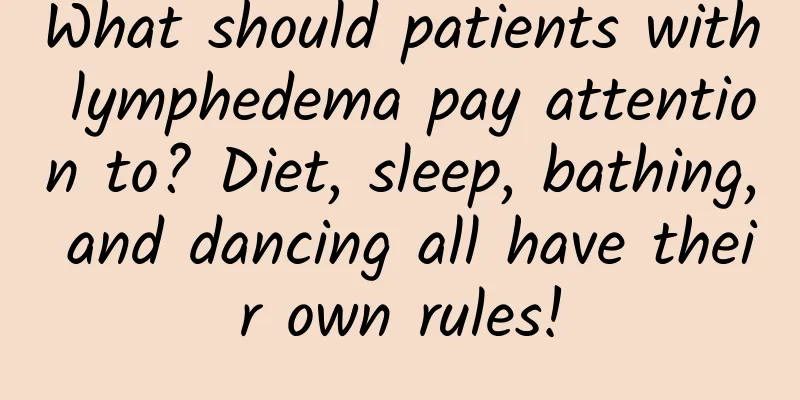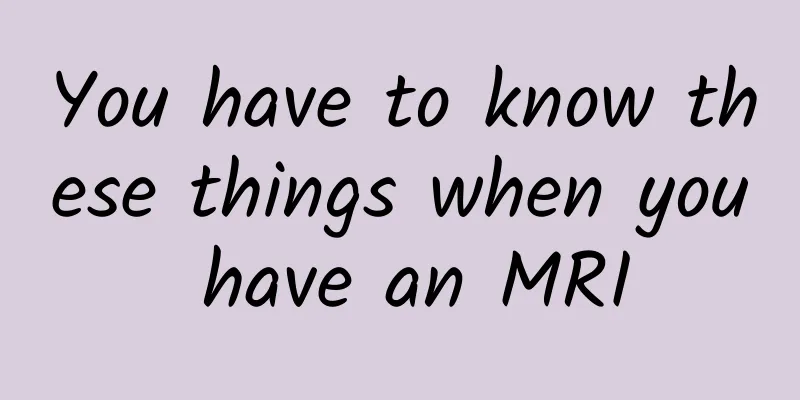#千万IP创科普# Four Seasons Pharmacist says丨Avoid the sun after taking medicine? Know about photosensitivity reactions in advance!

|
With the arrival of summer, in addition to the increase in the number of patients with skin diseases related to seasonal factors such as summer dermatitis, solar dermatitis, papular urticaria, etc., some people also suffer from skin diseases related to exposure to sunlight or ultraviolet rays after taking medicine, which is called drug-induced photosensitivity reaction. Do you know about photosensitivity reaction? Conditions for drug photosensitivity reactions Photosensitivity reaction of drugs refers to an adverse reaction of photosensitivity dermatitis after exposure to ultraviolet rays after using photosensitive drugs. Ultraviolet rays mainly include medium-wave ultraviolet rays with a wavelength of 290 to 320 nanometers (nm) and long-wave ultraviolet rays with a wavelength of 320 to 400nm. Two conditions must be met for drug photosensitivity reaction to occur: the first is the use of photosensitizing drugs, and the second is exposure to a certain amount of sunlight or ultraviolet rays. Classification of drug photosensitivity reactions According to the mechanism of occurrence, drug photosensitivity reactions are divided into phototoxic reactions and photoallergic reactions. Phototoxic reactions are mostly clinically manifested as excessive sunburn-like reactions. Phototoxic reactions can occur in anyone. Generally, they can occur within a few minutes to a few hours after the first use of the drug and exposure to sunlight and similar light sources. The onset occurs on the face, V-shaped area on the chest, limbs and other exposed parts of the skin. The clinical manifestations are similar to solar dermatitis, which is edematous erythema. In severe cases, blisters appear, and there is a burning and stinging sensation. The intensity of the phototoxic reaction is related to the concentration of the photosensitizing drug and the time and intensity of light exposure. After removing the photosensitizer and avoiding light, the reaction subsides quickly. Photoallergy is a delayed allergic reaction, an acquired immune-mediated reaction with a low incidence. In addition to being related to drugs, the occurrence of photoallergy is also related to genetics and allergic constitution. The first onset of photoallergy generally has a latent period of 24 to 48 hours. In addition to occurring on exposed areas, the rash can also spread to non-exposed areas. The clinical manifestations are an eczematous appearance with visible erythema, papules, blisters or exudation, generally without pigmentation. Chronic damage can cause the skin to thicken or lichenify, and some may develop into chronic, persistent photosensitivity reactions. Drugs that can cause photosensitivity reactions (1) Anti-anxiety drugs Alprazolam. (2) Antimicrobial drugs Azithromycin, fluoroquinolones, and trimethoprim-sulfamethoxazole. (3) Acid-suppressing drugs Omeprazole, rabeprazole, pantoprazole and esomeprazole. (4) Antidiabetic drugs Voglibose, glimepiride. (5) Uric acid-lowering drugs Benzbromarone. (6) Antihypertensive drugs Nifedipine, valsartan, irbesartan and hydrochlorothiazide. (7) Antiarrhythmic drugs Amiodarone. (8) Lipid-lowering drugs Fluvastatin, fenofibrate. (9) Diuretics Furosemide, hydrochlorothiazide. (10) Skin medication Loratadine, retinoic acid, promethazine, etc. In addition to Western medicine, some Chinese medicines or plants can also induce photosensitivity reactions, which is called phytophotodermatitis. This type of Chinese medicine includes Chinese medicine containing psoralen and isopsoralen, such as psoralea corylifolia, peucedanum chinense, angelica dahurica, etc. Methoxsalen, a topical drug for psoriasis, is a derivative of psoralen and should be used in accordance with the advice of a dermatologist. Some other Chinese medicines contain photosensitive quinone ingredients, such as St. John's wort (St. John's wort, which is not the same as forsythia), bamboo rhubarb, etc. Vegetables such as coriander, celery, fennel, toon, amaranth, gray vegetables, and fruits such as sweet oranges, lemons, and figs are also photosensitive because they all contain the same ingredient - furanocoumarin. Furanocoumarin is a natural photosensitizer that does not cause damage to the skin itself, but when exposed to ultraviolet rays, it will produce a photosensitive reaction, which will cause the skin to be sunburned. Treatment of photosensitivity reactions For photosensitivity reactions, the first thing to do is to remove photosensitizing substances and avoid light, apply local cold compresses and topical moisturizers; topical glucocorticoid preparations are used for anti-inflammatory purposes. Antihistamines can relieve itching, and in severe cases, glucocorticoids can be taken orally or intravenously. When some photosensitivity drugs must be used, sun exposure should be strictly avoided. The occurrence of photosensitivity reactions can be reduced by shortening the medication time, reducing the dosage of the drug, and applying it before going to bed at night. When exposure to light is unavoidable, you can choose sunscreens that have broad-spectrum protection against ultraviolet rays. Photosensitivity reactions can occur all year round, but they often occur in summer. Patients with a history of phototoxic reactions should use photosensitivity drugs with caution. It is recommended that you read the instructions carefully before using the drug. You must avoid exposure to sunlight or ultraviolet rays during the use of photosensitivity drugs and within 5 days after stopping the drug. If photosensitivity reactions occur, stop taking the relevant drugs immediately and go to the hospital's dermatology department for treatment in a timely manner. |
>>: When you have these symptoms, it is your kidneys sending you a "help signal"! Check yourself now
Recommend
Why do women always have dysmenorrhea?
Dysmenorrhea is a symptom that bothers many women...
How long does a normal abortion take?
For women who have an unexpected pregnancy, if th...
What is the difference between menstrual blood and uterine bleeding?
Menstruation is a normal physiological phenomenon...
What are the symptoms of kidney yin deficiency in women?
Nowadays, many health risks will appear, which is...
What are the harms of abortion?
As we all know, having a miscarriage is more or l...
Side effects of female contraceptives
Basically, most female contraceptive products use...
Why does my scalp hurt when I tie my hair?
I believe that many girls who love to tie their h...
It’s the peak season for rhinitis again! Stem cells can keep you away from allergic rhinitis
Since March 2025, the pollen concentration in Bei...
How to take good care of the indwelling needle?
In pediatric infusion, intravenous indwelling nee...
Is there really such a thing as postpartum sickness?
Although we often hear people say that if you don...
What does C-reactive protein mean in children? Is it normal for children to have high C-reactive protein?
When we go to the hospital to check for a cold or...
Stunned! Irregular menstruation may be a symptom of teratoma
Teratoma is a common germ cell tumor in the ovari...
What part of the lotus is the lotus pod? Is the lotus the flower of the lotus root?
Lotus has always been regarded as a symbol of int...
How to sleep after cesarean section is beneficial to uterine recovery
After a cesarean section, there will be certain d...
You should know this about newborn stem cells!
When it comes to storing newborn stem cells for y...









